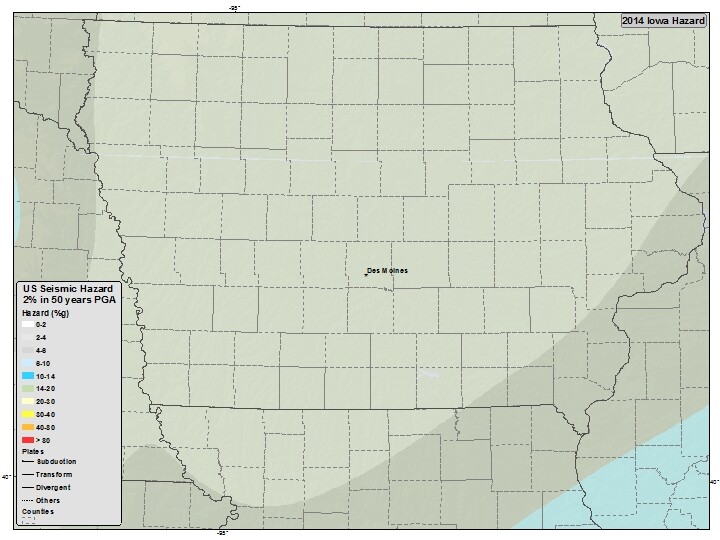Living in our part of the country we experience all that mother nature throws at us. Tornadoes, blizzards, flooding, drought, extreme heat and cold, dust storms, hail, and much more. However, one hazard not often thought about in Nebraska and Iowa are earthquakes. This morning, Sunday July 17, some people in southern Nebraska might have woken up to a slight trembling of the house. Maybe a few glasses were clinking, or things shaking? If you felt that before 8:30 this morning, you likely felt a magnitude 3.7 earthquake.
Who Felt It?
The epicenter of the earthquake occurred near the Nebraska/Kansas state line southwest of Hebron, Nebraska. For reference, the epicenter was 85 miles southwest of Lincoln and 135 miles southwest of Omaha. The earthquake was reported as being felt as far as Lincoln, Fremont, and even the Omaha metro albeit of a much smaller scale than further southwest.

What does a 3.7 Earthquake mean?
A 3.7 magnitude earthquake is on the low-medium end of the scale. Typically, these earthquakes can be felt 100-200 miles away but do little damage. The most these earthquakes can do is minor damage (i.e. stuff falling off your shelves). Any earthquake above a 5.5 on the Richter Scale can begin to do significant damage to structures.
Historical Earthquakes
Earthquakes can be highly destructive. Anything above a 7.0 earthquake can cause untold devastation. The strongest earthquake ever recorded was a 9.5 off the coast of Chile in 1960. More recent examples of significant earthquakes is the Haiti Earthquake (7.0) in 2010 which killed upwards of 100,000 people. The Japan Earthquake/Tsunami in 2011 (9.0) where the death toll exceeded 10,000.
The United States is certainly not immune to massive earthquakes. Perhaps the most well-known earthquake in US history was the one which struck San Francisco in 1906, registered as a 7.9 on the Richter Scale, destroyed much of the community. A little bit closer to home, in 1811 a massive earthquake ripped through southeast Missouri along the New Madrid fault line which was so strong it ran church bells in Boston and forced the Mississippi River to flow backwards.
How Common are Earthquakes in Nebraska/Iowa?
Luckily, earthquakes are very rare in our part of the country. This is mainly due to Nebraska and Iowa being far away from any tectonic plates which are focal points for earthquakes, such as the one which runs through California. A map from the USGS shows the relatively frequency of earthquakes for both Nebraska and Iowa, which the numbers are very low, suggesting the rarity of one occurring.


Since 1900, 98 earthquakes with a magnitude 2.5 or higher have been felt across the state. Meaning an earthquake occurs on average once every few years. Most of these earthquakes are relatively minor, with the strongest earthquake being a 5.1 right around where the earthquake today occurred back on March 28, 1964.

If earthquakes are rare in Nebraska, they are even rarer in Iowa. Since 1900, only 2 have occurred with a magnitude of 2.5 or greater within the state and a few on its borders.

Overall, earthquakes are very rare for the state as a whole, making the one which occurred this morning that much more unique.



